
Rembrandt van Rijn Painting Reproductions 2 of 13
1606-1669
Dutch Baroque Painter
296 Rembrandt Paintings
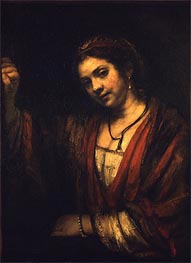
Hendrickje Stoffels in the Window c.1656
Oil Painting
$1820
$1820
Canvas Print
$67.89
$67.89
SKU: REM-2020
van Rijn Rembrandt
Original Size: 88.5 x 67 cm
Gemaldegalerie, Berlin, Germany
van Rijn Rembrandt
Original Size: 88.5 x 67 cm
Gemaldegalerie, Berlin, Germany
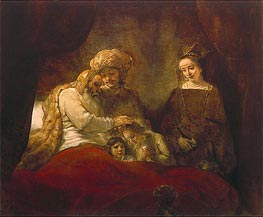
Jacob Blessing the Children of Joseph 1656
Oil Painting
$2097
$2097
Canvas Print
$79.29
$79.29
SKU: REM-2021
van Rijn Rembrandt
Original Size: 175.5 x 210.5 cm
Gemaldegalerie Alte Meister, Kassel, Germany
van Rijn Rembrandt
Original Size: 175.5 x 210.5 cm
Gemaldegalerie Alte Meister, Kassel, Germany
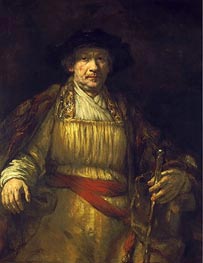
Self Portrait 1658
Oil Painting
$1869
$1869
Canvas Print
$72.32
$72.32
SKU: REM-2022
van Rijn Rembrandt
Original Size: 133.6 x 103.8 cm
Frick Collection, New York, USA
van Rijn Rembrandt
Original Size: 133.6 x 103.8 cm
Frick Collection, New York, USA
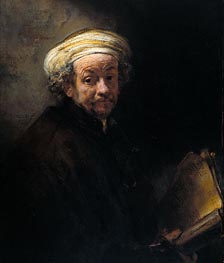
Self Portrait as Apostle Paul 1661
Oil Painting
$1614
$1614
Canvas Print
$79.47
$79.47
SKU: REM-2023
van Rijn Rembrandt
Original Size: 91 x 77 cm
Rijksmuseum, Amsterdam, Netherlands
van Rijn Rembrandt
Original Size: 91 x 77 cm
Rijksmuseum, Amsterdam, Netherlands

Self Portrait c.1661
Oil Painting
$1843
$1843
Canvas Print
$78.95
$78.95
SKU: REM-2024
van Rijn Rembrandt
Original Size: 114.3 x 95.2 cm
Kenwood House (The Iveagh Bequest), London, UK
van Rijn Rembrandt
Original Size: 114.3 x 95.2 cm
Kenwood House (The Iveagh Bequest), London, UK

The Jewish Bride 1669
Oil Painting
$2295
$2295
Canvas Print
$68.06
$68.06
SKU: REM-2025
van Rijn Rembrandt
Original Size: 121.5 x 166.5 cm
Rijksmuseum, Amsterdam, Netherlands
van Rijn Rembrandt
Original Size: 121.5 x 166.5 cm
Rijksmuseum, Amsterdam, Netherlands
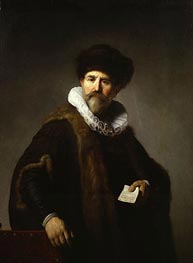
Portrait of Nicolaes Ruts 1631
Oil Painting
$2271
$2271
Canvas Print
$68.74
$68.74
SKU: REM-2026
van Rijn Rembrandt
Original Size: 116.8 x 87.3 cm
Frick Collection, New York, USA
van Rijn Rembrandt
Original Size: 116.8 x 87.3 cm
Frick Collection, New York, USA
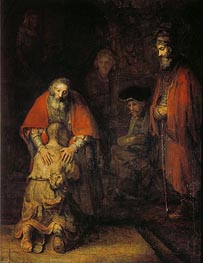
The Return of the Prodigal Son c.1668
Oil Painting
$2450
$2450
Canvas Print
$72.32
$72.32
SKU: REM-2027
van Rijn Rembrandt
Original Size: 262 x 205 cm
The State Hermitage Museum, St. Petersburg, Russia
van Rijn Rembrandt
Original Size: 262 x 205 cm
The State Hermitage Museum, St. Petersburg, Russia

Flora 1634
Oil Painting
$1966
$1966
Canvas Print
$75.55
$75.55
SKU: REM-2028
van Rijn Rembrandt
Original Size: 125 x 101 cm
The State Hermitage Museum, St. Petersburg, Russia
van Rijn Rembrandt
Original Size: 125 x 101 cm
The State Hermitage Museum, St. Petersburg, Russia

Tobit and Anna with a Kid 1626
Oil Painting
$1685
$1685
Canvas Print
$61.75
$61.75
SKU: REM-2029
van Rijn Rembrandt
Original Size: 39.5 x 30 cm
Rijksmuseum, Amsterdam, Netherlands
van Rijn Rembrandt
Original Size: 39.5 x 30 cm
Rijksmuseum, Amsterdam, Netherlands
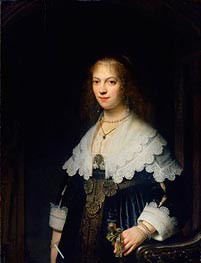
Portrait of Maria Trip 1639
Oil Painting
$2397
$2397
Canvas Print
$71.64
$71.64
SKU: REM-2030
van Rijn Rembrandt
Original Size: 107 x 82 cm
Rijksmuseum, Amsterdam, Netherlands
van Rijn Rembrandt
Original Size: 107 x 82 cm
Rijksmuseum, Amsterdam, Netherlands
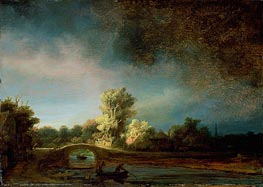
Landscape with Stone Bridge c.1638
Oil Painting
$1395
$1395
Canvas Print
$61.75
$61.75
SKU: REM-2408
van Rijn Rembrandt
Original Size: 29.5 x 42.5 cm
Rijksmuseum, Amsterdam, Netherlands
van Rijn Rembrandt
Original Size: 29.5 x 42.5 cm
Rijksmuseum, Amsterdam, Netherlands
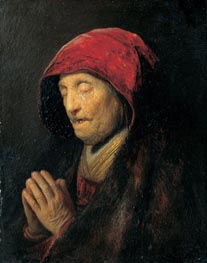
Old Woman Praying (Rembrandt's Mother Praying) c.1629/30
Oil Painting
$704
$704
Canvas Print
$61.75
$61.75
SKU: REM-4217
van Rijn Rembrandt
Original Size: 15.5 x 12.2 cm
Liechtenstein Museum, Vienna, Austria
van Rijn Rembrandt
Original Size: 15.5 x 12.2 cm
Liechtenstein Museum, Vienna, Austria
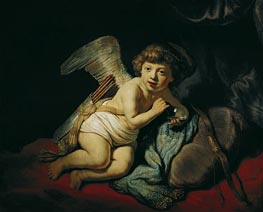
Cupid with the Soap Bubble 1634
Oil Painting
$2013
$2013
Canvas Print
$75.38
$75.38
SKU: REM-4261
van Rijn Rembrandt
Original Size: 75 x 93 cm
Liechtenstein Museum, Vienna, Austria
van Rijn Rembrandt
Original Size: 75 x 93 cm
Liechtenstein Museum, Vienna, Austria
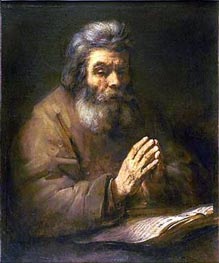
Old Man Praying 1661
Oil Painting
$1330
$1330
Canvas Print
$77.09
$77.09
SKU: REM-5060
van Rijn Rembrandt
Original Size: 87.3 x 72 cm
Cleveland Museum of Art, Ohio, USA
van Rijn Rembrandt
Original Size: 87.3 x 72 cm
Cleveland Museum of Art, Ohio, USA
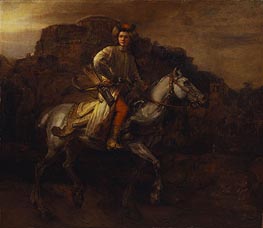
The Polish Rider c.1655
Oil Painting
$1328
$1328
Canvas Print
$81.34
$81.34
SKU: REM-7259
van Rijn Rembrandt
Original Size: 116.8 x 134.9 cm
Frick Collection, New York, USA
van Rijn Rembrandt
Original Size: 116.8 x 134.9 cm
Frick Collection, New York, USA

The Good Samaritan 1630
Oil Painting
$1586
$1586
Canvas Print
$61.75
$61.75
SKU: REM-7851
van Rijn Rembrandt
Original Size: 25.4 x 20.3 cm
The Wallace Collection, London, UK
van Rijn Rembrandt
Original Size: 25.4 x 20.3 cm
The Wallace Collection, London, UK
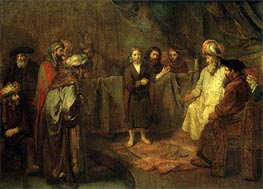
The Twelve Year Old Jesus in Front of the Scribes c.1655
Oil Painting
$2484
$2484
Canvas Print
$70.28
$70.28
SKU: REM-8417
van Rijn Rembrandt
Original Size: 97.5 x 129 cm
Hamburger Kunsthalle, Hamburg, Germany
van Rijn Rembrandt
Original Size: 97.5 x 129 cm
Hamburger Kunsthalle, Hamburg, Germany

Repentant Judas Returning The Pieces Of Silver 1629
Oil Painting
$3301
$3301
Canvas Print
$72.32
$72.32
SKU: REM-8488
van Rijn Rembrandt
Original Size: 79 x 102 cm
Private Collection
van Rijn Rembrandt
Original Size: 79 x 102 cm
Private Collection

An Old Woman (The Artist's Mother) c.1629
Oil Painting
$1736
$1736
Canvas Print
$72.49
$72.49
SKU: REM-8697
van Rijn Rembrandt
Original Size: 61.3 x 47.3 cm
The Royal Collection, London, UK
van Rijn Rembrandt
Original Size: 61.3 x 47.3 cm
The Royal Collection, London, UK
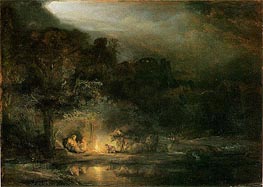
The Rest of the Flight into Egypt 1647
Oil Painting
$943
$943
Canvas Print
$61.75
$61.75
SKU: REM-8699
van Rijn Rembrandt
Original Size: 34 x 48 cm
National Gallery, Dublin, Ireland
van Rijn Rembrandt
Original Size: 34 x 48 cm
National Gallery, Dublin, Ireland

The Sacrifice of Abraham 1635
Oil Painting
$2618
$2618
Canvas Print
$63.63
$63.63
SKU: REM-8707
van Rijn Rembrandt
Original Size: 193 x 132 cm
The State Hermitage Museum, St. Petersburg, Russia
van Rijn Rembrandt
Original Size: 193 x 132 cm
The State Hermitage Museum, St. Petersburg, Russia
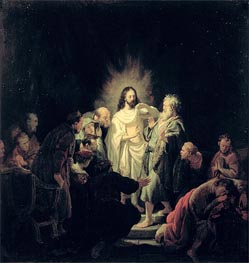
The Incredulity of St Thomas n.d.
Oil Painting
$2711
$2711
Canvas Print
$83.63
$83.63
SKU: REM-8882
van Rijn Rembrandt
Original Size: 53 x 51 cm
Pushkin Museum of Fine Arts, Moscow, Russia
van Rijn Rembrandt
Original Size: 53 x 51 cm
Pushkin Museum of Fine Arts, Moscow, Russia

Portrait of Jan Six 1654
Oil Painting
$2045
$2045
Canvas Print
$85.08
$85.08
SKU: REM-8883
van Rijn Rembrandt
Original Size: 112 x 102 cm
Private Collection
van Rijn Rembrandt
Original Size: 112 x 102 cm
Private Collection